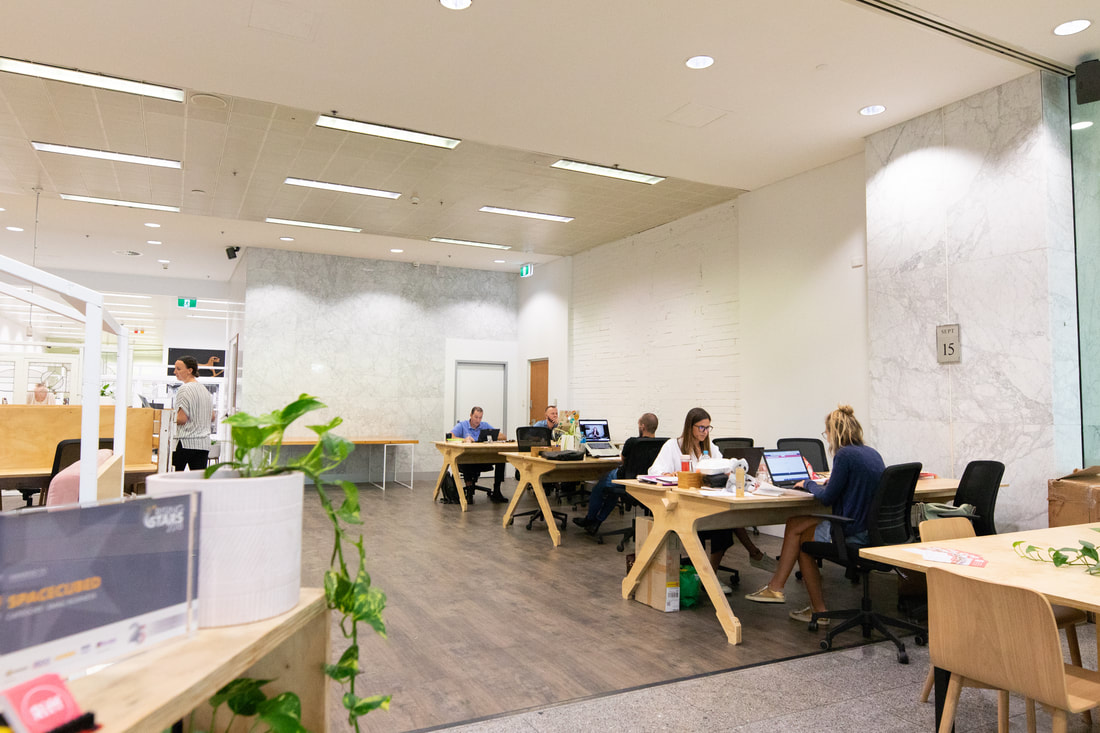|
There's an elephant in the room, Karen. It's sitting right there on the sofa, getting very comfortable. For goodness sake, don't give it the remote control, especially "in these uncertain times".
Do you see it? It's sitting right there, at the end of that last paragraph. It's hiding in plain sight, so we put some quotation marks around it so that you can spot it more easily. When were "times" ever certain? There is no doubt, that nobody is untouched by change. It's been forced on us in a way we rarely have to experience here in Australia. However, that does not make the world less certain than it was before. In some ways the reverse is true - we have now have more rules that influence our lives than we had before. So why do we feel that everything is now more uncertain? We are in a situation that very few of us ever imagined. We had our future mapped out in our heads, and it didn't include the risk of spreading a deadly virus. Nor did we imagine that we might have to practice social distancing from some of those we love, that we might have to change the way we work, or that even the act of getting food would need some form of reinvention. We feel more uncertain because the future only ever existed in our own imaginations - and we never imagined it would be like this. So now we will have to re-imagine it - and we have a choice. We can give the elephant the remote control, or we can take control ourselves. Giving the elephant the remote control means that we will just wait. We'll watch what the elephant wants us to watch, or play what the elephant wants us to play, when it feels like playing it - if it feels like playing it. The feeling of uncertainty is because what we imagined turned out to be not what happened. Some of what we thought we would do, may not even be possible for some time. So now we can simply re-imagine it. We can take control of our own future, we can be realistic about what wasn't working before, and we can reset our compasses. Change Agents, now is the time to lead. Let's imagine and communicate a better future, based on what we've learned recently. We've learned that family and friends matter most, that having savings for a rainy day is a good idea, and that flexible working can 'work' well. Let's imagine working in ways that enhance our well-being, rather than taking from it. How are we going to invent the future and make the world or work better, because believe it or not, the elephant has no idea.
0 Comments
When C.S. Lewis published his wonderful work, The Lion, The Witch, and The Wardrobe in 1950 it was a part of a series; The Chronicles of Narnia. The inspiration for the series was the time when three children, that had been evacuated from London during the blitz, temporarily came to live with Lewis near Oxford for their protection from the bombs falling nightly on London. Through his story, Lewis provided a place where they, and us with them, could escape their isolation.
Lewis created the story of a magical kingdom, Narnia, that existed from within the wardrobe in the spare room. There the children flourished through adventure, discovery, and the strength of finding themselves and their abilities. Many workers are now facing a new form of evacuation, as we deal with the wretched blitz of the Covid-19 virus. None of us have likely ever seen such a change in our society, businesses, family, and working arrangements. We've certainly never had to respond to such a situation, let alone so quickly. For many, this now means working remotely with very limited social connection, beyond the distance of a screen. In a way, we are very similar to Lucy, Edmund, Susan, and Peter, the characters that Lewis created, as we now effectively isolate to protect ourselves and others from this terrible virus that uses us to spread so easily. Since very few of us just happened to have a ready home-office just waiting for this scenario, we have found ourselves hastily preparing a work station, probably similar to a study desk. Our workplaces arranged for the right connectivity and the video conferencing, and so we packed our necessities and headed home. We are often told that people don't like change. Our new response to that can be to remind ourselves of just how adaptable we are. Now there's just our families or house-mates, our screens, and maybe the dog. It wouldn't be a video call if there wasn't at least one bark in the background, reminding us that there is a life beyond the screen, the work, and the world that resides on the Internet. Yet now we have far greater limitations on interacting with that world. Many from your team are in shock. They may feel isolated, and feel anxious as nobody can predict for how long this is going to last. These feelings change daily, sometimes even hourly, for all of us. We've written before how humans are social beings and the importance of having social connection. The workplace has long been an important part of our social network, but now it is only two dimensional and is lacking so much because of that. The study desk, the TV, and our phones have become our 'wardrobe'. They are where we find adventure and discovery. As managers, we now need to nurture our own capacity to find, embrace, and explore our unique capabilities, as well as encourage it in our teams. So Change Agents - what we need to complete this analogy is a 'Lion'. Will that be you? Will you be the one who uses this time to nurture the capacity of your team, and allow people the autonomy to find their unique contribution? Will you be nurturing discretionary effort, or will you try to enforce compliance? Choose wisely. There will be managers out there who are video calling their team regularly, just to check that they're working. Others will be calling to check and test that their authority is still in place. These managers are seeking control, and the problem with that is that it most often stifles creativity, willing contribution, and discretionary effort. What everyone needs most right now, as we try to cope with the wickedness of a virus that uses our social strengths to cause such devastation, is our own time to process what is happening around us, how we can take care of ourselves, and still find a way to contribute to the things that matter to us. When we made The H Factor system, we designed it around the things that people need in order to fully contribute to a meaningful purpose. Business for humans is our new tagline, because the system is designed around the natural human desires and the need for all leaders to nurture them. It has never been more important. Please, take care of yourselves, your family, and your team. Stay well, and do all you can to limit the spread of this terrible virus. One of the biggest constraints on the growth of a business is the lack of support for managers. As businesses grow, meeting the challenge of having the right data, and expertise to collect and interpret it, becomes a critical success factor.
For small and micro-businesses, the administration support tends to be highly compliance focused. At this stage, it is about minimising the risks of not meeting compliance obligations; usually in areas such as taxes, licenses, and contracts. For example, to reduce compliance risks the business will usually engage a bookkeeper, and put in place an accounting and payroll system. Or they may engage experts and put in place systems for project management and/or CRM. These technicians, and their systems, then get the business through to the next stage of growth. They become valued partners as they add efficiency and instil structured ways of working that enable operational capability and capacity. Without them, the business would stagnate and struggle under the weight of regulatory burden, operational inefficiency, and the inability to consistently deliver for their customers. These technicians and their systems are like the morning coffee. They kick things off and provide the quantitative business data for dealing with the issues of compliance, operational capability, and business efficiency. This is data such as financial, sales, production, and capacity information. As the business grows there becomes a need for more management capability. This happens because with more customers comes the need for more people, and with more people comes the need for more managers. The business needs a different type of data, and a new system for obtaining and using it. Despite everyone's best intentions, with more people the business naturally experiences the challenges of maintaining its productive culture, instilling consistent management decision processes, and continuing its growth. One of the most critical success factors for growth, is how well the business transitions the administration effort and focus from compliance to supporting managers in driving the productive behaviours in the business that generate profitability. This requires a system for qualitative data - so that managers can have consistent information about the human qualities that are driving business performance. Businesses often invest heavily into their quantitative data systems, but they often over-look their systems for gathering consistent qualitative data. This data is often more difficult to systemise as it's responses to open questions, and it's words rather than numbers. Qualitative data provides far better information about the barriers to human performance. For example, quantitative data can provide managers with information that shows the need for changing something, but qualititative data gives the information that drives the behaviour to achieve that change. To achieve the next phase of growth, the data system in the business needs to provide a sound process for gathering and using qualitative information. This supports decision making, enables management consistency, and drives productivity. It is like giving the business its second cup of coffee every day, as it drives the business energy towards removing the barriers that are preventing sustainable performance. Our question to you, Change Agents is: Are the systems in your business only focused on quantitative data, and what process are you instilling for enhancing the human experience - the qualitative experience - in your organisations to achieve growth, sustainability, and ultimately, your purpose? #2020operationclarity 2020 Vision. It is about clarity and sharpness. In small business, we know that success comes from the clarity of business objectives. When leaders can share their vision and the things that are needed to achieve it, then it leads to contribution, engagement, and achievement.
H Agents are making 2020 the year of business clarity. For our clients, we want 2020 to be the year they progress:
We have always encouraged business owners to have clarity and focus on their desired business outcomes, so last year we integrated our business planning tool - the Proceed With Purpose Plan - into The H Factor system. We became the only online people management system with a built in, structured, and integrated, business planning tool. It enables you to define, articulate, and share your business goals, and then link those goals to specific teams, actions, and people. The system enables your team to build your business with you; as you establish clarity of objectives, set priorities, decide on actions, and enable accountability. So we want to share our purpose and encourage business owners to join us on #2020operationclarity. Everyone has the right to create the extraordinary, and share the joy of contribution. It starts with clarity and there is no better time to give your business 2020 vision. The way we work is changing, and with that we need to change the way we talk about the role of a leader. The way teams are organised, work is allocated, and people are employed has changed, but the way we talk about leaders hasn't.
The way work is changing has, in some ways, been hiding in plain sight. At The H Factor, we work from a co-working space - that's our office in the picture above. We're part of a community with hundreds of other members, most of whom are independent small and micro businesses. The building used to be the Perth office of the Reserve Bank of Australia - all 9 floors of it. Another co-working space recently opened up with 7 floors in Perth's tallest building. These buildings were once the domain of some of society's biggest corporate and government institutions. As those institutions have downsized, centralised, automated, or even completely disappeared in some cases, then the spaces that were once symbols of their strength have become a refreshing symbol of the changing way we work. Some of those large institutions themselves now have people working from such co-working spaces. The office towers might look the same from the street level, but inside them a quiet revolution has taken place. Co-working is just one example of how work is changing. People also work from home, from their smart-phones, and over the Internet. There's also the sharing economy where the traditional classification of employer and employee is complicated. As well, many professional roles are now carried out on a contract basis, rather than in the conventional permanent employer/employee relationship. There is a common thread to all of these changes. Organisations are seeking ways of working that encourage greater alignment of behaviours and interactions to their business outcomes. At the same time, people have greater expectations of their work being meaningfully aligned to their own conscience with regards to ethical, social, and cultural issues. These changes are not so much about what people do, but are more about how people are allocated their activities, collaborate with others, and deliver their outcomes. People have greater capacity to negotiate their outcomes than ever before - and that is a good thing. These changes have not really happened overnight, even though it might sometimes feel that way. They've taken place over a number of years, and gathered momentum with changes in technology, employment law, offshoring, and outsourcing. Despite all of this, something hasn't changed much, and that is the way we see the role of a leader. Typically once a person reaches a certain level, then their organisation will send them off to be trained on the skills of leadership and people management. Managers then bring those skills back to the workplace. It is assumed that if they are not successful then it must be because either they didn't learn the skills, or they can't apply them. There is something wrong with this model. People are supposed to come back from training and become a leadership guru, dammit! Imagine if we employed engineers on the same basis. Most of us don't think about who the engineer was when we cross a bridge. We rightly expect that a qualified engineer will have had the necessary processes and used appropriate systems to properly do their job. It should be the same for people management. The role of the leader should be to apply their skills using effective and reliable systems and processes in the business that enable consistent and reliable people management. As we find ever more creative ways to allocate work and organise teams, this becomes ever more important. With an effective people management system the leader can apply their skills to ensure that the team strategy is appropriate for the external environment, and that the resourcing is sufficient to achieve it. Instead, we talk about good leaders or bad leaders. We put the emphasis on the person, and ignore the effectiveness of the systems that a person has to help them use their leadership skill. For sure, managing people is a learned skill, just like engineering or accounting, that is based on a growing and evolving body of knowledge. Just like those skills, an organisation must have effective tools available so that practitioners can productively and consistently apply their knowledge. So, Change Agents, are you working on the people management system in your business? Or are you still focused on an ego-centric approach? Gurus are cool, but they're hard to find, and it is very rare to build a sustainable organisation around them. Let's change the conversation about leadership from being about the things that make a leader good or bad, and shift the focus to being about the reliability of the processes that enable people in the organisation to make productive decisions about their actions, interactions, and behaviours - no matter how they are employed, where they work from, or who their manager is! |
AuthorsH Agents write about the joys and challenges of entrepreneurship and managing people. Archives
November 2021
|
(c) Copyright 2018 INCOMMAND Pty Ltd. View our privacy policy and data security statement. Please note that your use of The H Factor system is subject to our Terms of Service.






 RSS Feed
RSS Feed